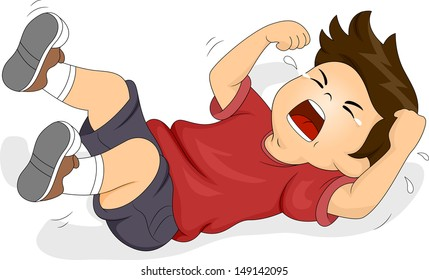Do You Dread Transitions?
Do You Dread Transitions?
Clean up, clean up, everybody, everywhere. Clean up, clean up; everybody do you share……. 
If that song brings dread into your heart when you hear it, you are not alone! Like many adults, children also struggle with transitions. Have you ever been to an event that is so enjoyable, you hate for it to end? How about a weekend family reunion on Sunday night? Or, have you been immersed in a project or a great book and life is forcing you to put it down? As rational adults, we have the tools and experience to deal with how to stop doing something fun.
When children are engaged in an enjoyable activity, there always comes a time when the activity must end. Sometimes, without warning, a transition in the classroom begins. Children are expected to immediately stop what they are doing and prepare to do something different. For many children, this does not go well.
If you care for children with Autism, Sensory Processing Disorder or A.D.H.D., transitions can be the stuff that nightmares are made of.
So, how can we begin to make transitions smoother?
- Give warnings

Let children know in advance that their activity will end soon. Be mindful that children cannot tell time. You can use countdown timers, sand timers, or even showing a size with your hands far apart, and then closer and then showing only a small amount of time left.
- Establish Routines and Stick to Them
Make sure your day is consistent as possible. Children appreciate knowing what comes next. Remind children with picture schedules and with verbal reminders. “After we clean up, we are going outside.”
- Connect with Each Child
Some educators announce that there is a transition coming to the entire room. They forget that some children can be so engrossed in their play that they don’t hear their teacher and don’t get any warning of the upcoming change. Make sure you check in with all the children in the room, ensuring that each child knows what is coming.
You may want to put your hand on the shoulder of a child who is not making eye contact with you to make sure you’ve connected with him/her. You can also check-in and ask, “Did you hear what we’re doing next?” By connecting with each child, you can prevent meltdowns. Perhaps you can offer to take pictures of what the child has created, or suggest to place their work in a safe place so they can finish at a later time.
- Make Transitions Fun
Have you been singing the same transition song for years? It’s time to change your tune and find something exciting, new and fun.
Children grumble about transitions because they usually have to wait. Waiting is B.O.R.I.N.G. If children must wait, be prepared with songs, games or activities. If children are playing a game while waiting for their peers to change out of their winter clothes, something fun might motivate others to finish up to join the fun.
Great Transition Games
- Simon Says
- I Spy
- Statues
- Rhyming words
Great Transition Activities
- Singing songs
- Fingerplays
- Use a puppet
- Teach sign language
Always remember to catch the children being good. Praise children by pointing out what they are doing right. Be specific; avoid saying, “Good job.” Children do not know why they are being praised. Instead, you can say, “Billy, I love how quickly you picked those blocks up” or “Naik, you are a good friend by helping Jerry put the trucks in the box.”
Make sure you positively reinforce the actions of your entire class. “I am so happy to see every ready for our story.”
https://www.preschool-plan-it.com/transition-activities.html
https://education.yourdictionary.com/for-teachers/what-transition-ideas-can-be-used-between-activities-at-preschool.html
https://theinspiredtreehouse.com/transition-strategies-preventing-tantrums-during-daily-routine/
